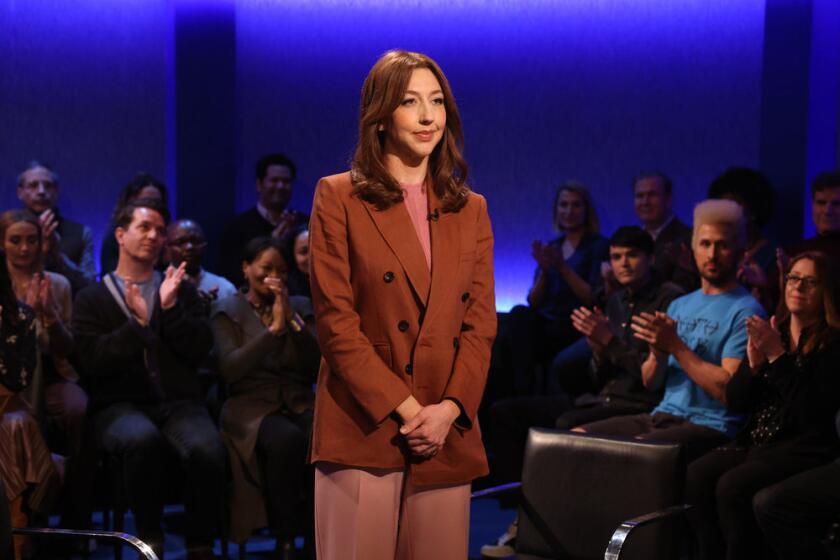The Netflix documentary series ‘Captive’ takes a gripping look at hostage crises across the globe
“Captive,” a documentary series premiering Friday on Netflix, aims to be the fact-based version of one of those taut suspense thrillers starring Liam Neeson. Each of the show’s eight episodes tells the story of a different hostage crisis, dramatizing tense, high-stakes negotiations through a combination of archival recordings, present-day interviews and artful re-creations.
It’s the latest spin on TV’s true crime craze, with the focus here on kidnapping and extortion. Murder plays a part in “Captive,” but the series is less about the taking of life than the minute-by-minute effort to avoid that outcome.
The two episodes available for review recount situations that took place thousands of miles apart in distinct cultures, but also share themes of racial and economic tension.
“Lucasville” is a tick-tock account of the deadly 1993 riot at the Southern Ohio Correctional Facility (commonly referred to as Lucasville), a crowded maximum security prison in a depressed region on the outskirts of Appalachia. What began on Easter Sunday as a protest by inmates turned into an 11-day standoff over conditions at the prison and the fate of eight correctional officers taken hostage.
“The Cola Kidnap” is the more intimate tale of Corinne Coffin, a wealthy Brazilian American woman and mother of three who ran her family’s bottling company. Kidnapped at gunpoint in the middle of traffic by a military veteran raised in the favelas who demanded $20 million in ransom, Coffin was held for weeks, during which time her panicked family attempted unsuccessfully to keep the story out of the news.
The series is executive produced by unscripted TV veterans Jonathan and Simon Chinn, as well as Doug Liman, a director with a flair for sophisticated, stylish action films (“Mr. & Mrs. Smith,” “Edge of Tomorrow”). Aesthetically, “Captive” ranks well above the typical cable-TV documentary. It is cinematic and slickly produced, with production value visible in nearly every frame, including impressionistic re-creations and gorgeous aerial shots of Rio de Janeiro.
The show is equally impressive from a journalistic standpoint. The producers have clearly put in a tremendous amount of legwork into tracking down perpetrators, victims, eyewitnesses, family members and law enforcement officials, and getting them to open up about their traumatic experiences. “Lucasville” is especially noteworthy in this regard, featuring interviews with surprisingly forthcoming former inmates and several ringleaders now on death row.
Without resorting to easy moral relativism, the series also incorporates multiple viewpoints on each situation, encouraging the viewer to understand, if not necessarily empathize, with abductor as well as abductee. The perpetrators, including Coffin kidnapper Ronaldo Monteiro and Lucasville agitator Siddique Hasan, are men of puzzling contradictions.
Each episode stands on its own and retells a discrete story within the space of (roughly) 60 minutes, so that the series plays a bit like a nonfiction procedural drama. Unlike “The Staircase” or “Making a Murderer,” it is not a long, serialized tale that will gobble up 10 hours of your life. If you’re in the mood for a bit of pulse-pounding true crime that’s tastefully presented and won’t require an enormous time commitment, “Captive” is a perfect choice.
But the episodic structure is also limiting, in that it doesn’t allow much room for context or elaboration beyond the basic outlines of each harrowing story. The documentary on Lucasville, though undeniably riveting, touches on numerous complex, entrenched problems within the correctional system, such as overcrowding and ethnic factionalism, that could easily fill up another hour of screen time, if not an entire series.
Likewise, “The Cola Kidnap” delves into globalization and the Brazilian class and racial divide, but there’s simply not enough room to do justice to these subjects with the time available.
Part of the issue is the show’s rather expansive concept, which allows for an almost too wide array of stories and circumstances. At least so far, there’s little attempt by the filmmakers to draw explicit connections across cultures, to unravel the confluence of factors that have turned kidnapping and hostage-taking into lucrative illegal pursuits in various corners of the globe. For now, “Captive” is a smart, character-driven documentary thriller that would benefit from a stronger throughline.
See the most-read stories in Entertainment this hour »
‘Captive’
Where: Netflix
When: Any time, premieres Friday
Rating: Not rated
Twitter: MeredithBlake
More to Read
The complete guide to home viewing
Get Screen Gab for everything about the TV shows and streaming movies everyone’s talking about.
You may occasionally receive promotional content from the Los Angeles Times.






